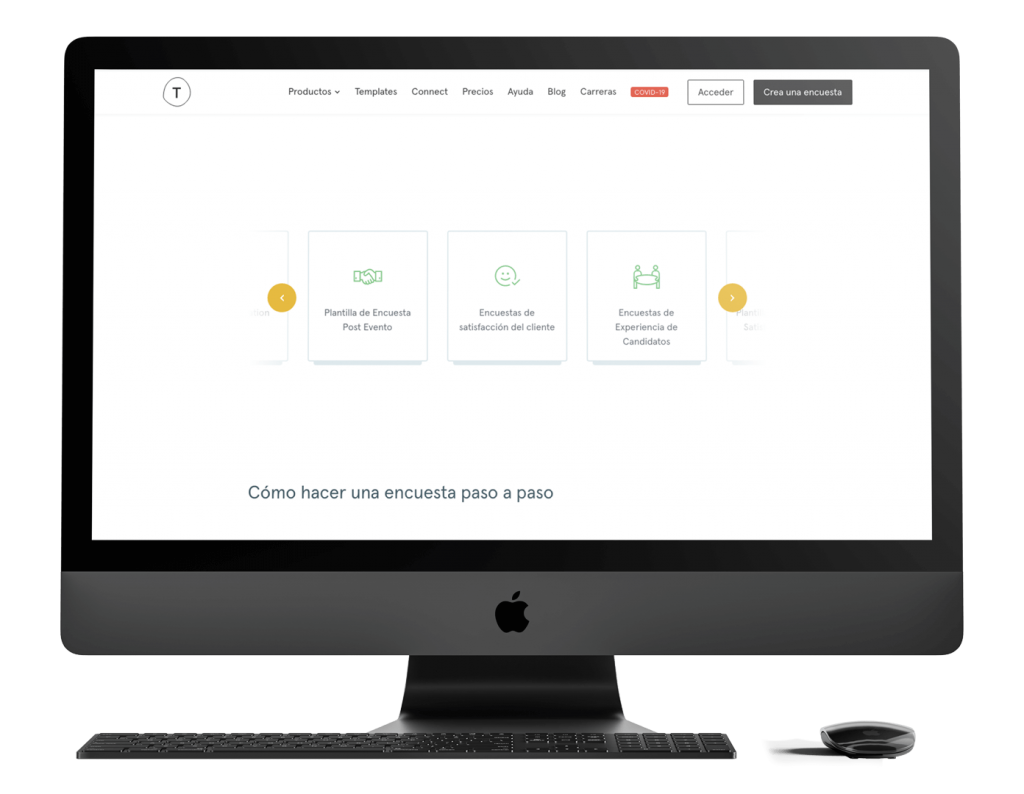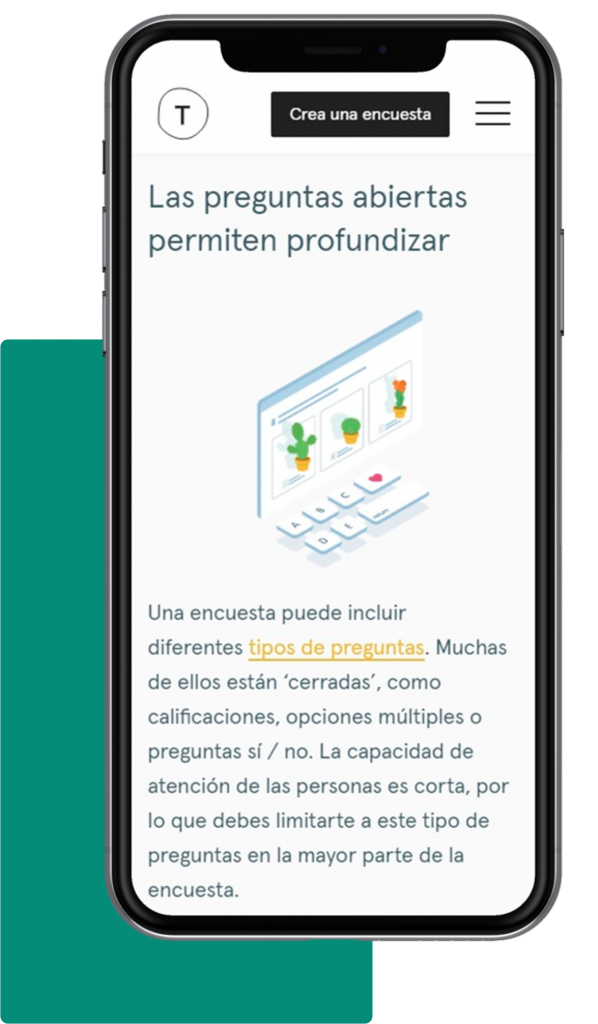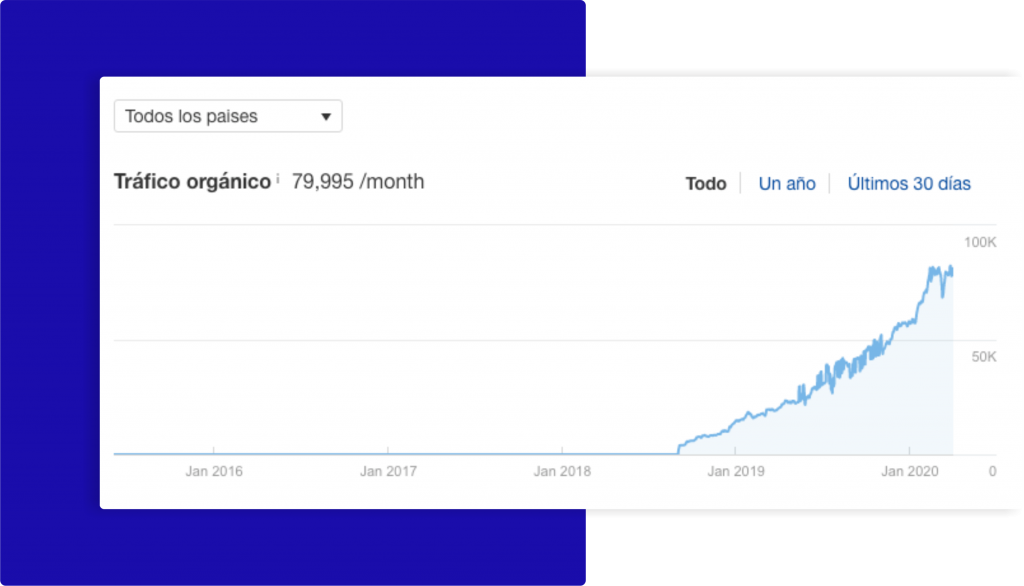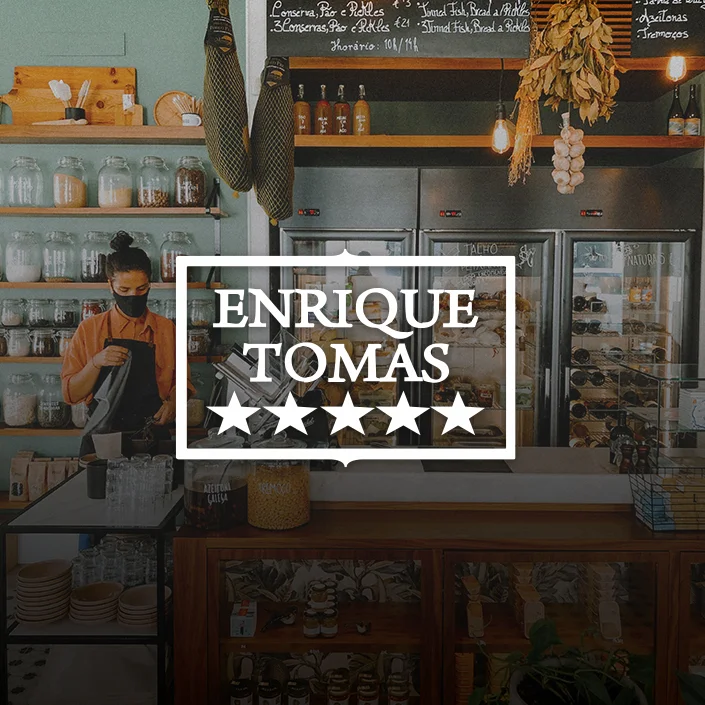TYPEFORM
It broke into the Spanish market and overtook its competitors.
With a new SEO strategy, focused on content quality, usability and conversion, Typeform conquered the Spanish-speaking market, positioning itself in the TOP 3 of Google.
+900%
of Organic Traffic in 12 months
+460%
of conversions in 12 months
+80.000
Monthly visits achieved
THE COMPANY
A SAAS that innovates on UX to compete with giants
The survey SaaS sector is one of the most traditional in the digital market and is dominated by well-known solutions whose features have undergone little change over the last 20 years.
Typeform was born with the purpose of innovating the UX (user experience) offered by online survey forms and breaking the monotony of conventional SaaS.
This Spanish start-up created a software that its customers can use to easily create and customise online surveys, whose forms are highly interactive and visually appealing.
The data speaks for itself. More than 50% of users who view one of their surveys complete it. This is a much higher conversion rate than your competitors.
THE CHALLENGE
Positioning in a new market and increasing conversions
After a successful landing in the English-speaking market, Typeform set out to address the Spanish-speaking market, both in Spain and Latin America.
Its strategy was based on two main pillars:
- Position yourself for the intention to search for surveys and forms in Spanish.
- Increase your website conversions by selling your survey and form templates.
THE SOLUTION
A new strategy for a new market
Typeform decided to partner with BIGSEO to meet its new objectives, given that it had to face consolidated competition. This industry has major players such as Survey Monkey, Question Pro and Google Forms, among others.
The competitive analysis revealed that the strategy followed by this start-up in the English-speaking market was not replicable.
Instead, it was necessary to establish a new customised approach, capable of unseating other well-established competitors.
STEP ONE
Correct SEO Errors
The SEO audit revealed that Typeform’s website had some problems that affected its organic positioning, especially in the translation, from English to Spanish, that the start-up had previously carried out.
It was important to start with an optimised and error-free website. To do this, the errors were resolved on three levels:
- Cannibalisation resolution: Typeform had pages that were trying to rank for the same keywords. In addition, some less relevant URLs were ranking above transactional pages, which needed to be corrected.
- Resolution of other SEO On Page problems: There were broken links, images without ALT tag or without meta title and meta description. Every detail was detected and corrected.
- Resolution of errors in the translation: It was time to tidy up the content, as English texts were mixed with others in Spanish. In addition, some links in the Spanish domain led to pages in English.

SECOND STEP
Conversion Focused Content Strategy
Once a solid SEO foundation had been laid, the next phase consisted of creating a Reversal Inbound content strategy.
In other words, a content plan was designed to attract organic traffic from qualified users with a clear intention to buy.
To do this, high quality content was developed, focused on keywords with a high volume of searches, and attacking the lower part of the sales funnel.
The texts were created with a careful optimisation that favoured their rapid positioning. Likewise, different calls to action were strategically included to favour conversion.
In addition, to accelerate the results, an outreach strategy was carried out, focused on getting authority links from pages in the sector.

STEP THREE
UX to Improve Conversion
While the quality of the content was critical, the Typeform website also needed to offer a good user experience that would enhance conversion.
To achieve this, a CRO (Conversion Rate Optimisation) process was carried out, focused on improving the usability of the website. This process included the incorporation of the following functionalities:
- Side navigation menu with jumplinks.
- CTAs and buttons at strategic points in the text to encourage the reader to buy.
- Clustering of content at the top of the page to segment the user from the start and better respond to their search intent.

STEP FOUR
Isolated Keyword Strategy
Even a website with Typeform’s authority needs time to see results in organic rankings.
After three months of creating valuable content for online survey users, they started to rank easily. However, the category page was failing to rank in Google’s top 3.
To boost this URL, a TSG (Turbo SEO Guide) was carried out. This technique consists of isolating certain keywords with the highest search volume in a single pillar content that responds to all related search intentions.
The result is high-value content for the user, where they can find answers to all their questions.
On the other hand, thanks to the interlinking strategy, this category page distributes the reader to different blog posts where he can further expand the information.
Google was given the necessary information to understand the importance of the URL worked on and position it in the TOP 3.
As a side benefit, the other URLs linked to this page also benefited from a rise in the rankings.

STEP FIVE
Quality Links to Build Brand Credibility
Typeform was a new brand in the Spanish-speaking market, so it needed to gain visibility and recognition.
A quality linkbuilding strategy was developed to strengthen the main transactional pages.
This strategy succeeded in generating mentions on authority websites which, in turn, helped to increase the authority of the Typeform website and improve the positioning of the linked landing pages.

THE RESULTS
A 900% increase in organic traffic
After the first three months, Typeform’s website ranking started to show an upward trend, which showed that it was working in the right direction.
This upward trend continued throughout the first year. However, it was after the first eighteen months that the results multiplied exponentially.
At the start of the project, Typeform’s Spanish website was generating just over 9,000 organic visits per month.
During the following months, the trend was always upwards, with seasonal variations, especially noticeable due to the elections in Spain that altered the results for the word “encuestas”.
After 18 months, organic traffic had grown by 900% globally in all Spanish-speaking countries, amounting to 80,000 unique visits per month.





